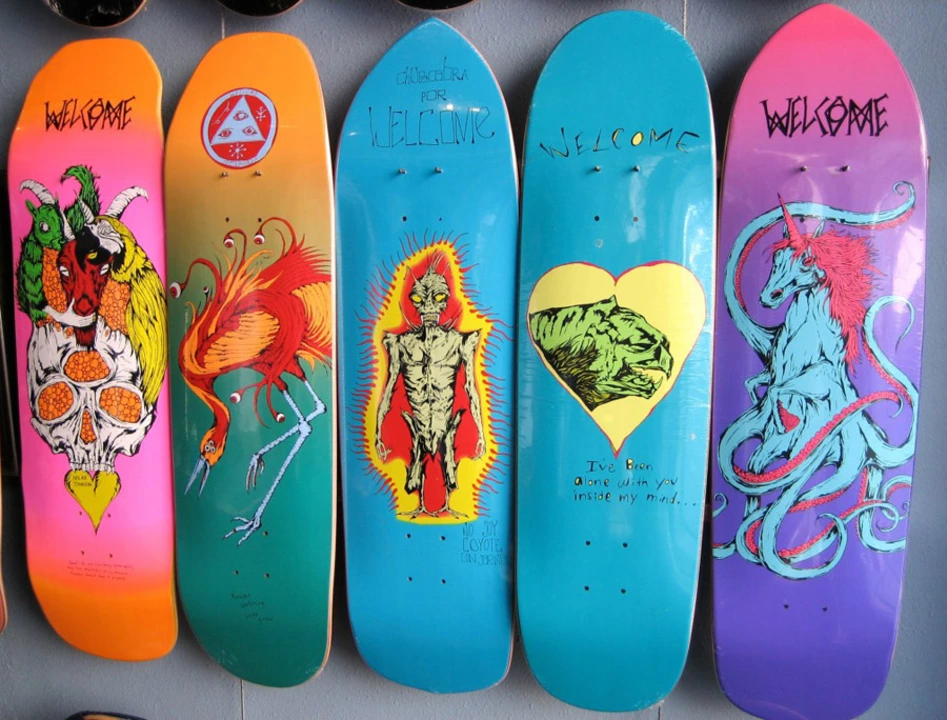Why are both ends of a skateboard shaped slightly different?
 May, 6 2023
May, 6 2023
Introduction: Skateboard Anatomy
As a skateboard enthusiast, I've always been fascinated by the unique design of this versatile piece of sports equipment. I've noticed that the skateboard's ends, also known as the nose and tail, are slightly different in shape, and I started wondering why this is. In this article, I'll delve into the reasons behind these distinct shapes and discuss the impact they have on a skateboarder's performance.
Nose vs. Tail: Identifying the Differences
The first step in understanding the purpose of the different shapes is to identify what sets them apart. When looking at a skateboard, you'll notice that the nose (front) is typically longer, wider, and has a more gradual curve than the tail (rear). This difference in design is not just for aesthetics; it actually plays a significant role in how a skateboard functions.
Concave and Kick
One of the main reasons skateboard noses and tails are shaped differently is due to the concave and kick of the board. The concave is the curve that runs lengthwise along the board, while the kick refers to the angle at which the nose and tail rise. A higher kick allows for better pop (the action of lifting the board off the ground), while a more mellow kick provides increased stability when performing tricks. The nose's larger size and more gradual curve provide a larger surface area for catching air and balancing during tricks, while the tail's steeper angle helps with quick, snappy movements.
Impact on Riding Styles
The differences in the nose and tail shapes cater to various riding styles and tricks. Since the nose provides a larger surface area and a more gradual curve, it's ideal for riders who prefer a more stable platform for performing tricks. The tail, on the other hand, is perfect for those who like quick, snappy movements and need a strong pop to execute their maneuvers.
Street Skating vs. Vert Skating
In street skating, where skaters primarily perform flat ground tricks and utilize urban obstacles like stairs and rails, the tail's steeper kick is advantageous for quick pops and precise control. Conversely, in vert skating, where riders perform aerial tricks on ramps and halfpipes, the nose's larger size and more gradual curve provide the stability and control needed for high-flying maneuvers.
The Evolution of Skateboard Shapes
Over the years, skateboard shapes have evolved to accommodate the ever-changing needs and preferences of skateboarders. In the early days of skateboarding, boards had a simple, flat shape with no concave or kick. As the sport progressed, so did the design of skateboards, leading to the introduction of the distinct nose and tail shapes we see today.
Popsicle vs. Shaped Decks
Modern skateboards come in two primary shapes: popsicle and shaped decks. Popsicle decks are symmetrical, with both ends having a similar shape, while shaped decks have different nose and tail designs. The choice between these two shapes is largely a matter of personal preference and riding style, but it's important to recognize that the evolution of skateboard shapes was driven by the need to enhance performance and cater to specific aspects of skateboarding.
Choosing the Right Skateboard for You
Now that you understand the reasons behind the different shapes of skateboard noses and tails, you might be wondering how to choose the right board for your riding style. Ultimately, the choice comes down to personal preference and the type of skateboarding you want to do. If you're unsure, trying out different board shapes and setups can help you find the one that best suits your needs.
Experiment and Adapt
As you progress in your skateboarding journey, your preferences and style might change. Don't be afraid to experiment with different board shapes and setups to see what works best for you. Skateboarding is an incredibly diverse sport with endless possibilities, and finding the perfect skateboard setup can make all the difference in your performance and enjoyment of the sport.
Conclusion
In conclusion, the unique shapes of skateboard noses and tails serve a functional purpose, catering to different riding styles and tricks. Understanding the reasons behind these differences can help you choose the perfect board for your needs and enhance your skateboarding experience. So, the next time you hop on your skateboard, take a moment to appreciate the subtle design elements that make this amazing sport possible.